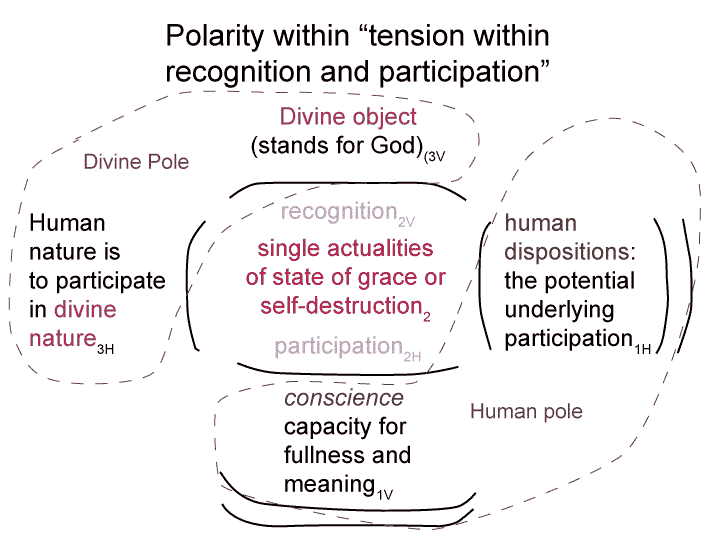Man and Sin by Piet Schoonenberg (1964) 2.1DW
[Intersections are like knots. They generate single actualities that do not interscope to an adjacent lower level. They interscope to higher levels, but not lower. Thus, when an intersection appears, its single actuality goes into the content level of an interscoping form.
At least, this seems logical to me at the moment. It seems like an odd rule. ‘The single actuality of an intersection’ behaves as possibility in an interscope.
‘A nested form on the content level’ contains ‘a single actuality that is composed of two actualities’. Two actualities compose an intersection. However, the content level nested form contains only the single actuality.
‘The single actuality of an intersection’ is treated ‘as a single actuality’ by ‘a content level nested form’. The normal context does not see ‘the operations within the intersection’ very well.]

